I consider myself very fortunate to be living on Torrisdale Castle Estate. In my time here, I have been lucky enough to see lots of wildlife, in and around the area and I would like to share some of the photos with you that I have been fortunate to take.
If you are lucky enough to have come across this wonderful place, then I invite you to take a walk on the wild side whilst you are here. Explore the area and you may just come across a few of these spectacular creatures. In the years I have been visiting Torrisdale and through to my time living here, (spanning over 20 years) I can say in that time I have seen 4 species of deer, otter, fox and mink, my husband Pete has seen red squirrel (of which I am jealous as I am yet to see this wonderful sight), and seals are often seen at the beach. There is an abundance of birdlife, including owls, sparrow hawks, heron, and buzzard, not to mention the majestic resident golden eagle. There will be more to follow on the birdlife and beach in a later blog.
So more about the animals; I mentioned 4 species of deer. About 20 years ago my husband and I were extremely lucky to see a Muntjac deer crossing down towards Torrisdale Water, but we didn’t have the camera with us, so we have no proof but both of us saw it and it was beautiful… what a great memory. Sadly we have not since one since, but what we have seen I have managed to get some pics of.
There have been many sightings this year of a similar looking buck around the Castle area, maybe it’s the same one. If you are quiet whilst walking around the estate, you can chance upon a deer. They come down to drink from the burn and can be seen scampering back into the undergrowth. Look out for their little white bottoms as they disappear. One day I was lucky enough to see a Red Deer Stag when taking my son down for the school bus. This was 2 years ago at about 8 in the morning proving they in the area, sadly didn’t have my camera with me that time! We also have Sika Deer that come onto the estate,and at rutting season (which is about now), you can hear the stags calling out for their ladies. The Roe deer seem to make a sharp squeaking noise when alarmed, so listen out if you hear it, it may just be a deer!
There have been many sightings this year of a similar looking buck around the Castle area, maybe it’s the same one. If you are quiet whilst walking around the estate, you can chance upon a deer. They come down to drink from the burn and can be seen scampering back into the undergrowth. Look out for their little white bottoms as they disappear. One day I was lucky enough to see a Red Deer Stag when taking my son down for the school bus. This was 2 years ago at about 8 in the morning proving they in the area, sadly didn’t have my camera with me that time! We also have Sika Deer that come onto the estate,and at rutting season (which is about now), you can hear the stags calling out for their ladies. The Roe deer seem to make a sharp squeaking noise when alarmed, so listen out if you hear it, it may just be a deer!
For a few months we had this little Weasel visiting us, I was worried it may decide to take a fancy to my chickens but thankfully it didn’t. Something like this would be quite hard to spot around the estate but they will be there, sneaking around and can be found throughout the year. This one appeared to like hiding under our pallet of wood! A weasel is a mammal of the family Mustelidae which includes polecats, stoats, ferret & mink. These are small active predators with long slender bodies and short legs. They can vary in length from 173 to 217mm, females are smaller than the males and usually have red or brown upper coats with white bellies. (Our Weasel looks like a female). They normally feed on small mammals such as mice, but sometimes can take bigger things like chickens or rabbits.
Slow worms can also be found around the estate. Again, you have to slow https://sapmea.asn.au/cialis-20mg/ things down and be quiet and you may be lucky enough to see one around the woodland edges or in the long grass. These are actually legless lizards although they do look like a snake. They like hunting around compost heaps and usually hibernate from October to March, so now is the time they will be around, hunting for food amongst the falling leaves getting their last chance of food before bed. They are much smaller than a snake, with a smooth golden-grey skin. I think the one in the picture is a female as she appears to have brown stripes down the side and back. Being more active at dusk, slow worms eat mainly moving prey such as slugs, worms, snails as well as the odd insect or spider, so it is great news to find one in my garden! They are completely harmless and are protected by law so should you happen upon a slow worm, the best thing to do is leave it alone and cover it back over gently. When we found this one, we quickly put it back under the shed, before my chickens caught sight of it for their lunch!
Spring lambs, well they can be spotted all around the estate in …. Spring! ….. This picture was taken in the Bay field, on route to the beach, and I couldn’t resist the cuteness of them clambering up onto the tree stump for a bit of fun. Later on in the year you can see how they have grown into young sheep but if you want to see them scampering around the fields, doing their little leaps of joy, then the best time for this is definitely spring time. There is an onsite Organic Tannery which makes sheepskin and deerskin rugs, this doesn’t open daily anymore but they are still producing a great quality product. If you want a look around, or to buy an organically tanned rug, then please telephone the castle to make an appointment to avoid disappointment.
At Alderlea Cottage we have at the moment 18 hens and a cockerel called Red, he is the father to this little chick who was born in June this year. As you walk around the estate you have two choices of where to see chickens. Here at Alderlea which is near Torrisdale Water on the estate, or at Lephinbeag (the old gamekeepers cottage) on the opposite side of the estate near Lephincorrach Water, they also have a few guineau fowl which make a unique sound!
Torrisdale Burn, this runs along from the hills behind Torrisdale Castle Estate, down through the Walled Garden, meeting up with the Lephincorrach Burn (which the Hydro runs from, and the Kintyre Gin is made with!). Both burns then tumble down together to meet the sea at Torrisdale Beach (more on the beach in a later blog).
One of the Macalister Hall family (I think it was the current laird Niall’s Great Granddad) made a weir in the Torrisdale Burn a long time ago, to see if they could encourage the salmon to swim up the river. What they did achieve was Brown/Sea Trout. If you are lucky enough to be around late October time and the burn is in spate (flowing fast and very full of water), usually when it’s rained quite heavy for a period of time… then stand on the bridge above the weir and wait.
You will hopefully see the sea trout (Salmo trutta) jumping up the weir and swimming for their lives to get further up the burn to spawn. This takes patience and if it’s raining that can be quite an achievement itself, but it’s well worth the trouble if you manage to see one! The trout shown above, have been photographed quite a way up the burn, at Alderlea where we have a footbridge over to our cottage. If you stand on this bridge you can see the fish sitting patiently waiting for a fly or other scrap of food to float by. These come back year after year and we are very fortunate to be able to watch them grow in size month on month, until the heavy rains come again and they swim back out to sea.
I hope this gives you a flavour of what animal life can be seen in and around this wonderful place. Remember, if you are quiet and keep a sharp eye out, you may be fortunate enough to catch a glimpse of these yourself. Good luck and happing spotting!
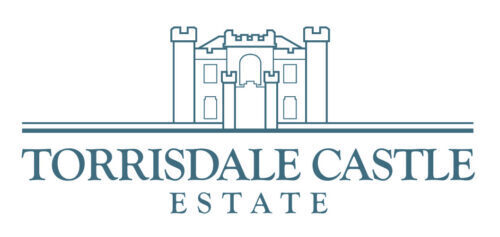
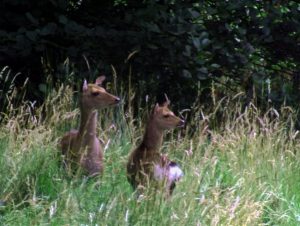
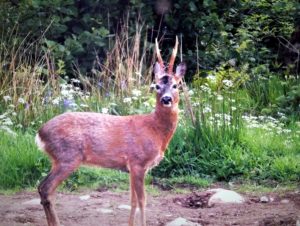
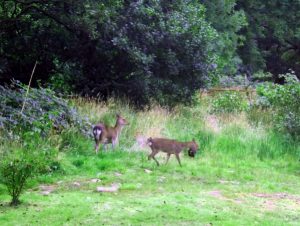
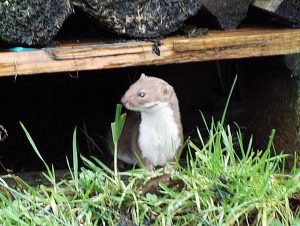
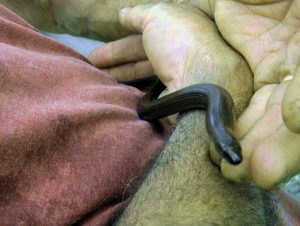
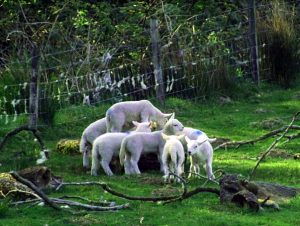
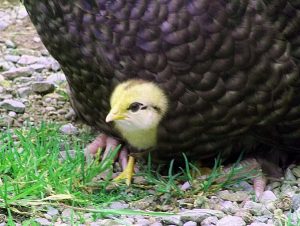
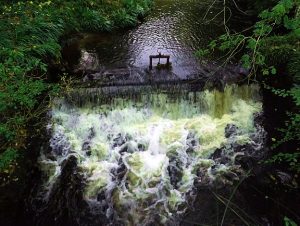
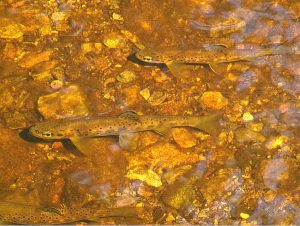

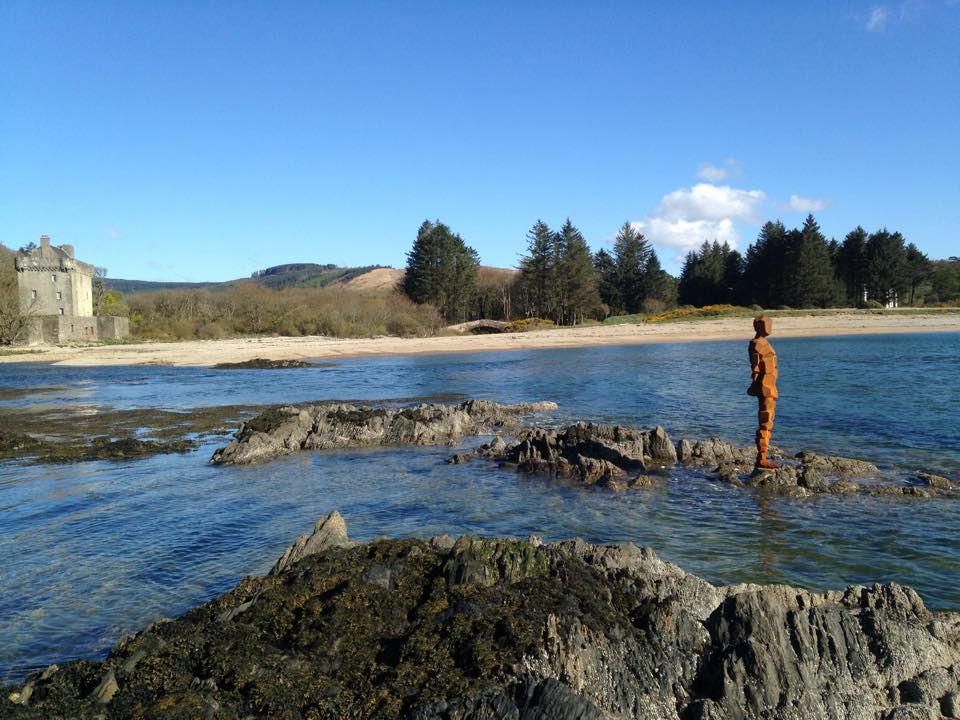
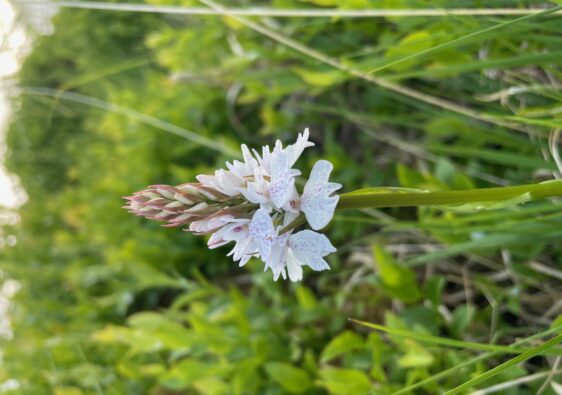
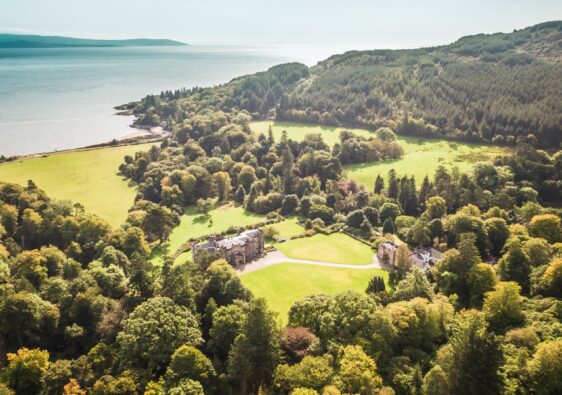
[…] the blog about wildlife. Animals will be hibernating […]